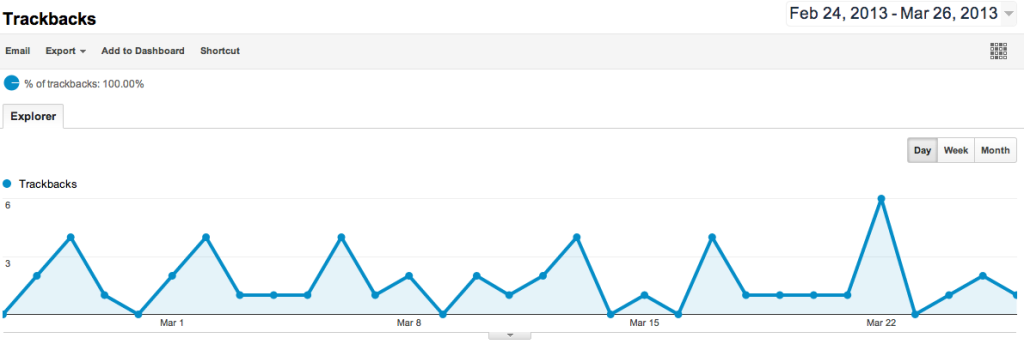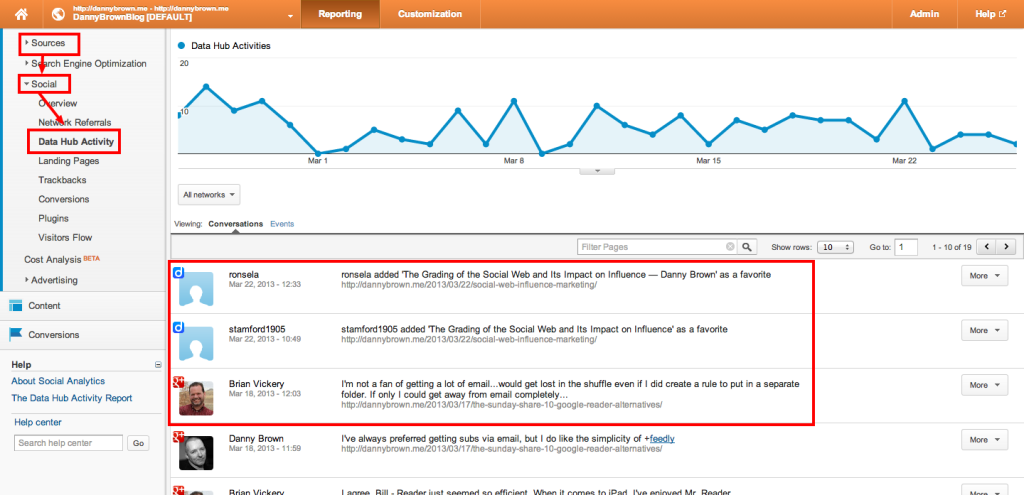This morning, I noticed Google Analytics had added a Trackbacks section to their Social Analytics data. This, to me, is very big news.
While bloggers will know all about Trackbacks and why it’s nice to get them, businesses may not be aware of their importance. Yet as the social web in particular continues to be graded, Trackbacks could become even more important, especially in the eyes of Google, as they look to rank the Authority of content and that content’s creators.
So why is this new Trackbacks edition to Google Analytics important and, more importantly, how can you use them to build your content strategy?
The Validation Factor of Trackbacks
For anyone who doesn’t know what a Trackback is, its definition is:
TrackBack is a type of peer-to-peer communication system that was designed to send notification of updates between two Web sites via a Trackback Ping. Ping in reference to TrackBack refers to a small message sent from one Web server to another. TrackBacks are useful for informing a Web site that you have referenced its Web site within your own Web site, and is popular with bloggers. TrackBack was first released as an open specification in August 2002. – Webopedia.
So, if I write a post and reference content elsewhere, that’s me providing a Trackback to the article. The reason bloggers like Trackbacks is simple – it offers validation that your content is seen as informative enough that someone else wants to share with their readers too (click image to expand).
The potential results of that share, or Trackback, are numerous.
- New readers or subscribers;
- New potential customers;
- Growth of influence;
- Identified as a thought leader in your industry;
- Search engine optimization (SEO) benefits.
These are just some of the immediate effects; however, by understanding what Trackbacks are and the potential they offer, you can begin to identify opportunities for your business to use this new feature in your content strategy.
Using Trackbacks in Your Content Strategy
As brands begin to understand the importance of content as part of their marketing strategy, using every tool in your toolbox becomes key when it comes to standing above your competitors and attracting eyeballs to your content.
There are a host of ways to do this currently. For example, being part of Google+ Communities or Linkedin Groups, where you can share your content with regards a topic of discussion (in a non-spammy, relevant way, of course).
You can also encourage social sharing via the likes of Twitter, Facebook, employee accounts, etc, or you could join a blog aggregator service like Triberr to increase your content’s visibility.
However, with the new data on Trackbacks available in your Google Analytics dashboard, you can use this additional information to build a content strategy into the bigger picture.
- Head on over to the blog or article in question, and thank the author, giving you more visibility to their audience, and showing you appreciate these referrals. It gives a good impression of how you do business.
- Identify the most popular content when it comes to Trackbacks, and use that data to build a series (or series of series’) around these topics.
- Identify the type of blogs that are sending readers your way, and determine if there’s any kind of partnership opportunity.
- Identify blogs that send a lot of new traffic via Trackbacks, and begin to link to them as opposed to their competitors, building a relationship that could turn into future business.
- Offer a value-added service to clients by filtering where they could improve their content and what type of information they could start to produce.
Again, these are quick, simple changes you can make now to start improving your own content strategy (and that of your clients). As the new Trackbacks service solidifies, expect more examples to become clear.
And when you tie that into the information available from the Data Activity Hub (click image to expand), that shows where your content is creating conversations elsewhere across the web, you can see the advantages your brand could begin to exert over your competitors.
As I’ve written many times before on this blog, understanding your traffic and how you can utilize that is key, for bloggers and brands equally. Google understands this, and is giving you all the tools you need to make better judgement calls as well as strategic decisions.
Are you taking advantage of these tools enough?






